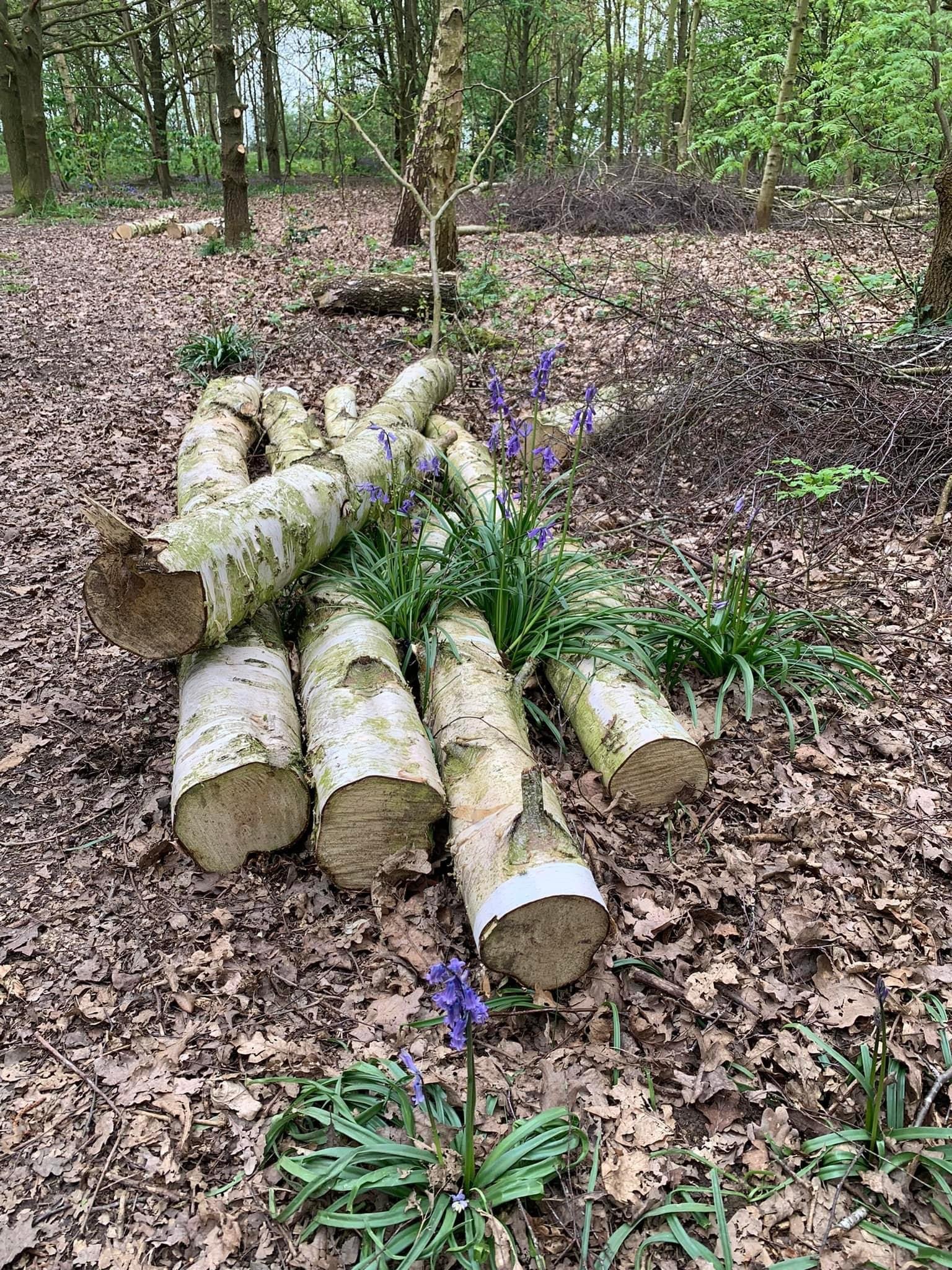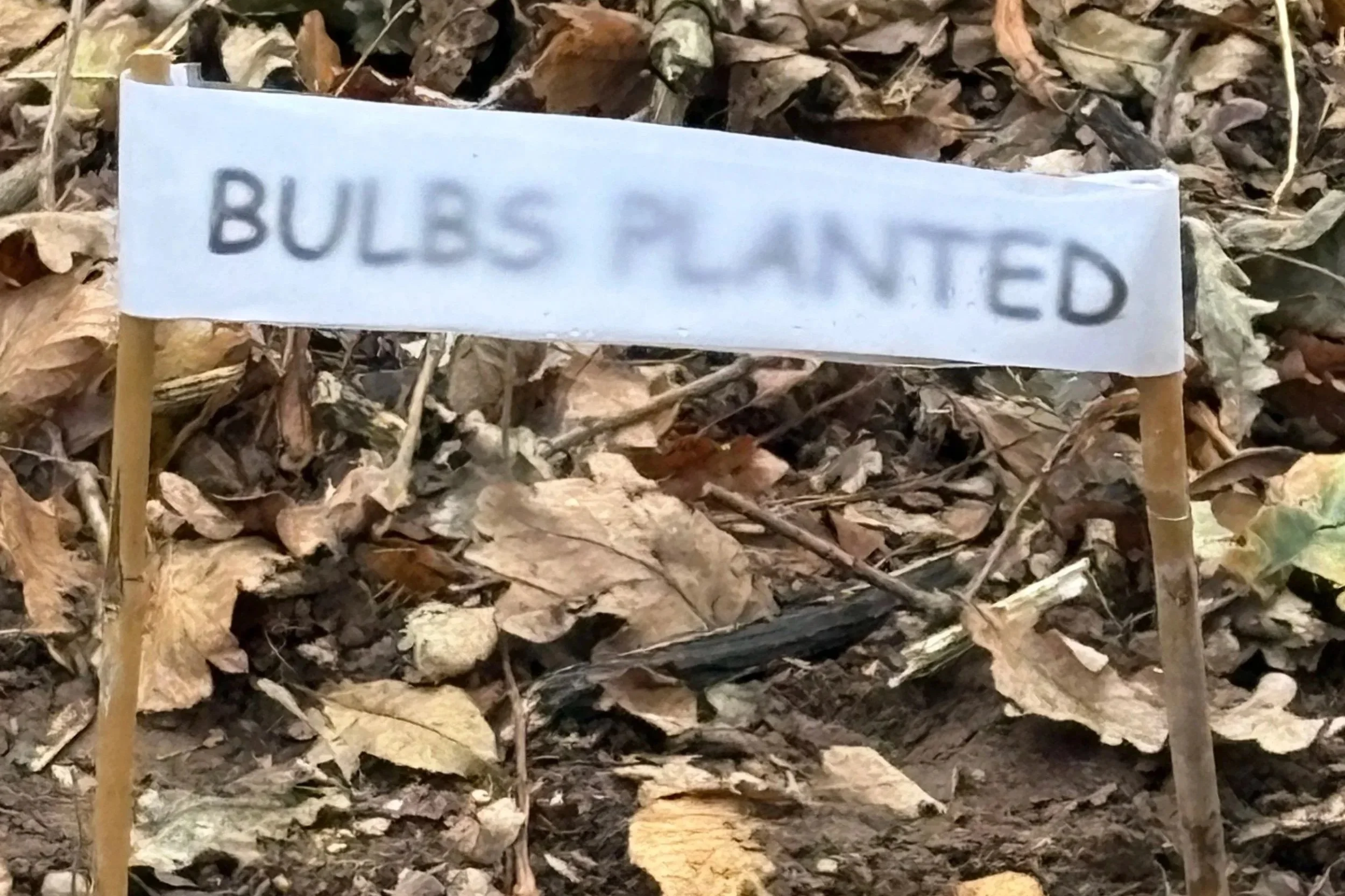What’s Happening in Our Woodland?
October 2025
Many of you have been asking about the recent work going on in our beautiful woodland — so here’s an update! 🍃
Spring and native bluebells peeking through
Our woodland was planted around 20 years ago, and after discussions with the Nottinghamshire Wildlife Trust and Tom Petitt, Conservation Officer at Rushcliffe Borough Council, it became clear that it now needs a little help to thrive. 🌱
This is perfectly normal for man-made, planted woodlands.
Our aim is to make sure the woodland remains a wonderful place for everyone to enjoy 🌼 while supporting a rich and diverse habitat for wildlife that calls it home 🐿️🦋🦉.
🌿 Why the Work Is Needed
Over time, the woodland canopy can become too dense 🌳🌳, blocking sunlight ☀️ from reaching the lower layers of plants. Healthy woodlands have four layers —
🌲 Canopy: tall trees
🌾 Shrub layer: smaller trees & tall shrubs
🌸 Field layer: flowering plants & ferns
🍄 Ground layer: mosses & tiny plants
When the canopy becomes overcrowded, we need to step in to let light reach all these layers.
When a mixed woodland is planted, fast-growing pioneer trees like Silver Birch 🌳 help protect slower-growing trees such as Oak and Beech .
Now, 20 years on, some of these birch trees have done their job and are being carefully removed to allow sunlight to reach others.
Even after felling, they continue to help the ecosystem through dead hedging and log piles — perfect habitats for insects and small animals 🐛🐞🦔.
Sadly, Ash Dieback 🍂 has also affected many of our ash trees, and these have been removed to stop the disease from spreading.
🌳 Encouraging Healthy Growth
You might notice some trees are thin or leaning — that’s because they’re stretching for sunlight 🌤️. By reducing the canopy, we help them grow stronger and straighter.
We’re also coppicing hazel — an ancient technique where hazel is cut back to encourage healthy new shoots and let in more light 🌞.
And to keep the woodland thriving for years to come, we’re planting new trees from the Woodland Trust 🌱 — the next generation ready to take over as older trees age.
Just some of our amazing volunteers working with Nottinghamshire Wildlife Trust
💚 Community Effort & Support
All this fantastic work is funded by the Wilder Trent Grant 🦋, awarded to the Parish Council — and made possible by our amazing volunteers 🙌 who’ve already given hundreds of hours to care for our woodland.
We are incredibly grateful for their time, energy, and passion. 💪🌿
If you’d like to volunteer or join a guided woodland walk 🚶♀️🍂 to learn more about what’s happening, we’d love to hear from you!
📩 Get in touch to get involved or find out more about our woodland’s future.
Together, we’re helping our woodland thrive — for people, for wildlife, and for generations to come. 🌳💚🐦
Cllr Kim Kupfer, October 2025
Autumn colours
Careful where you tread, woodland bulbs newly planted to bring a splash of colour in springtime



